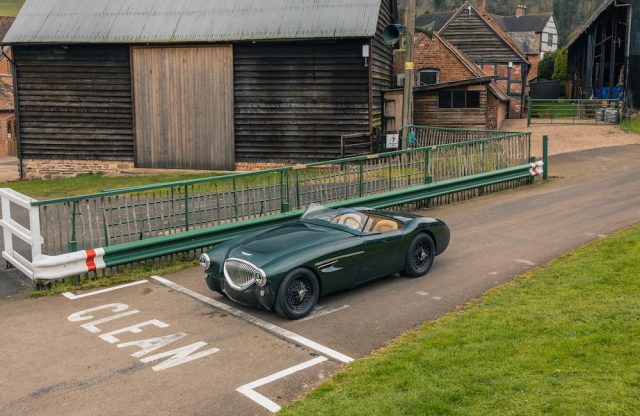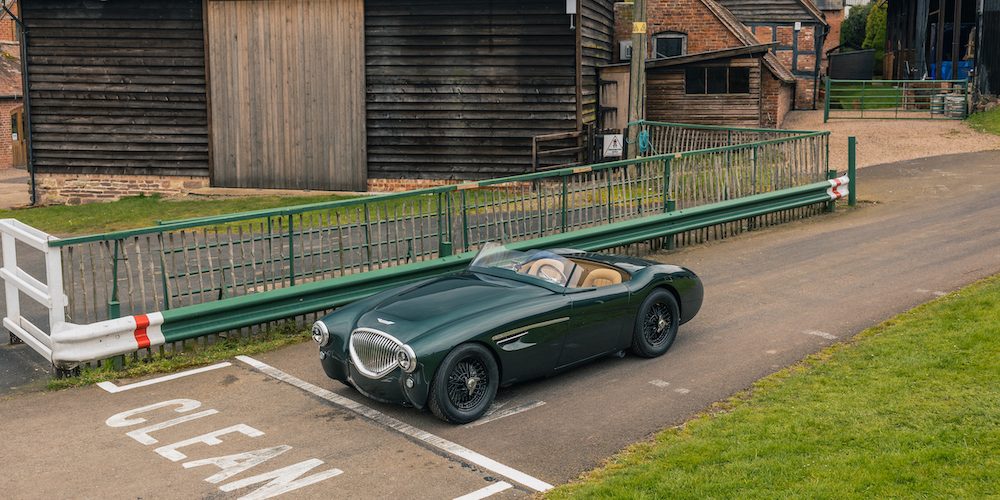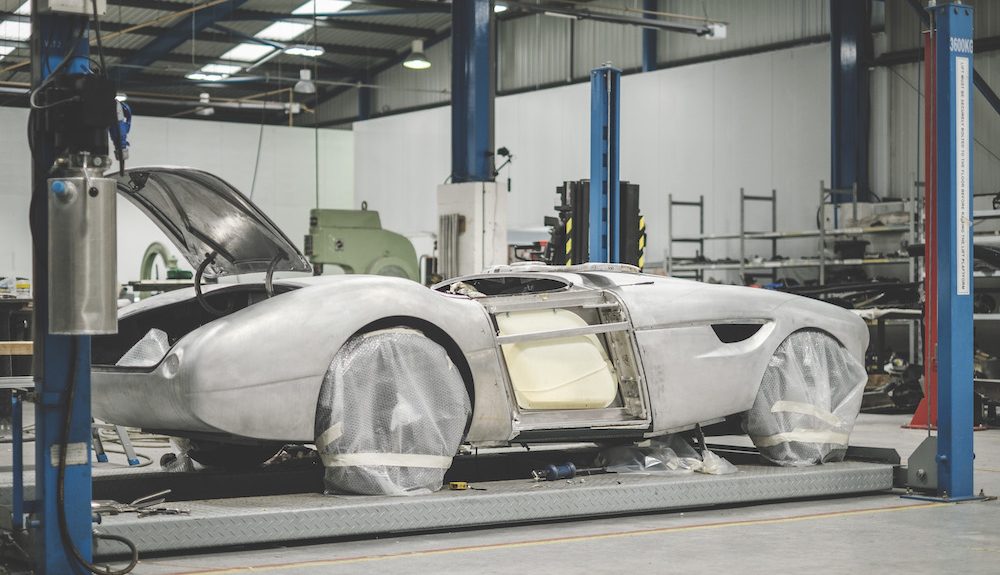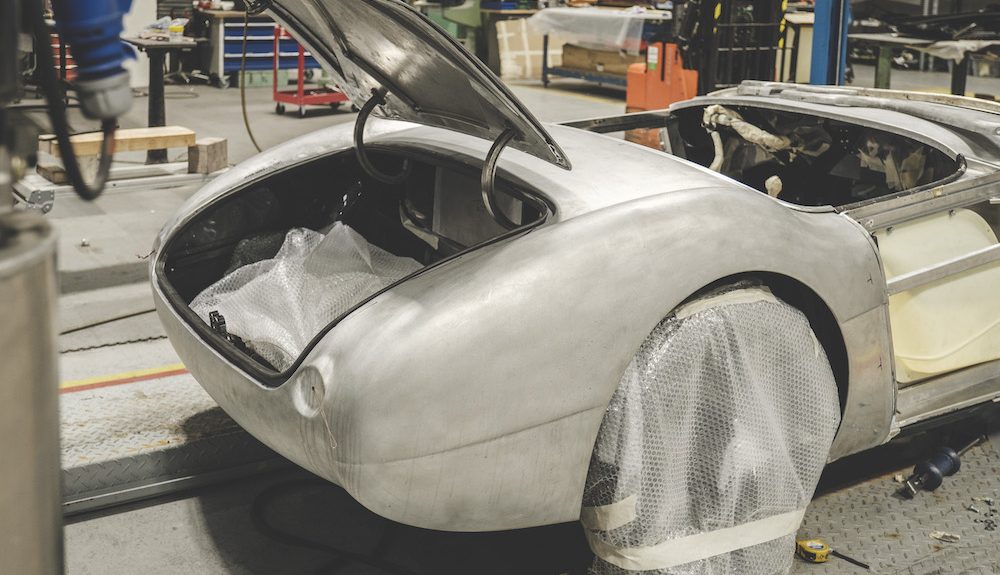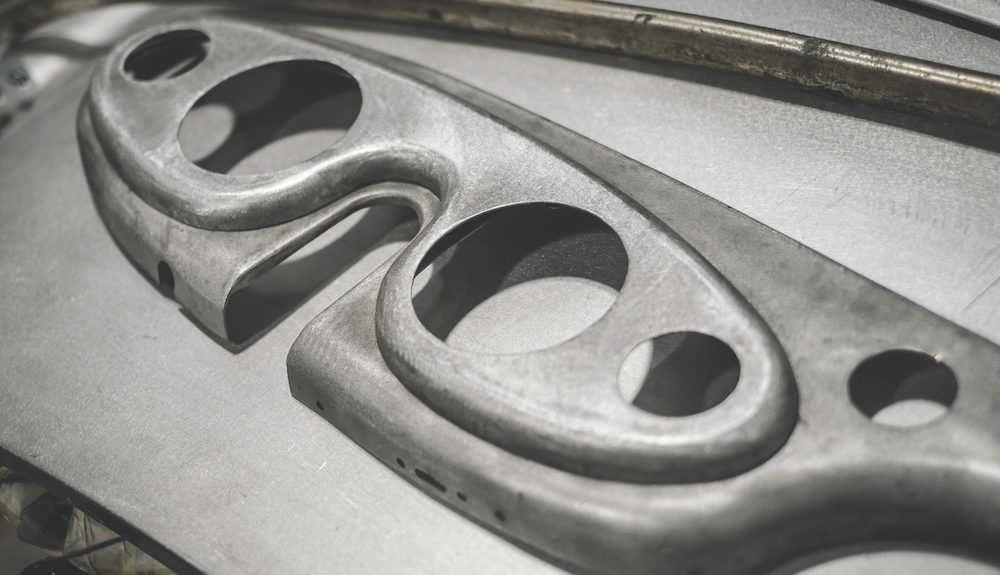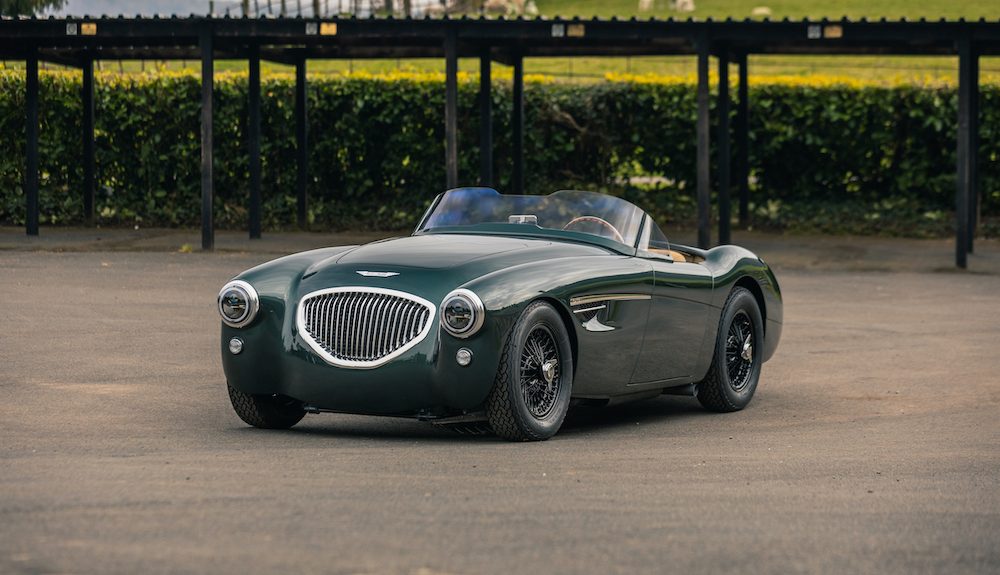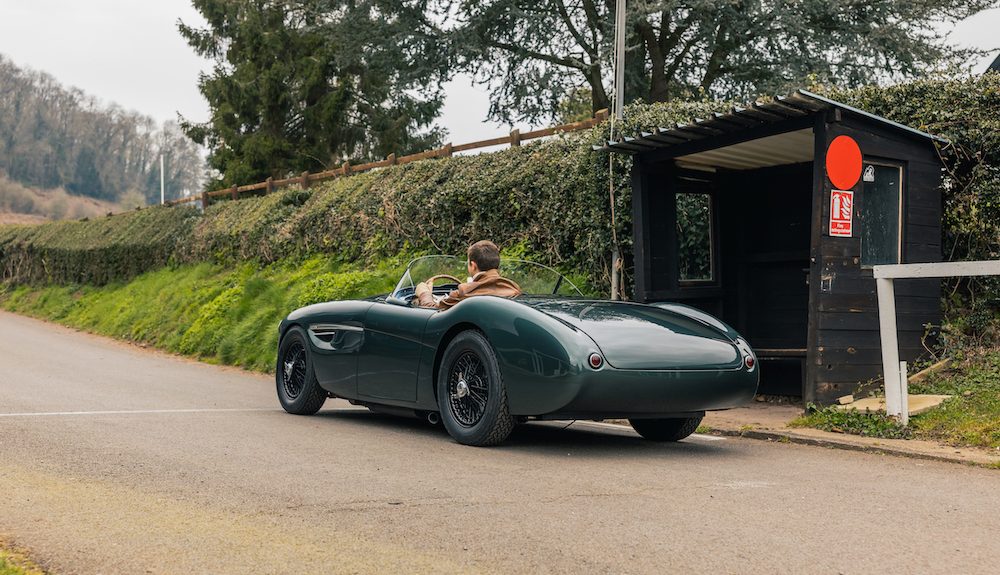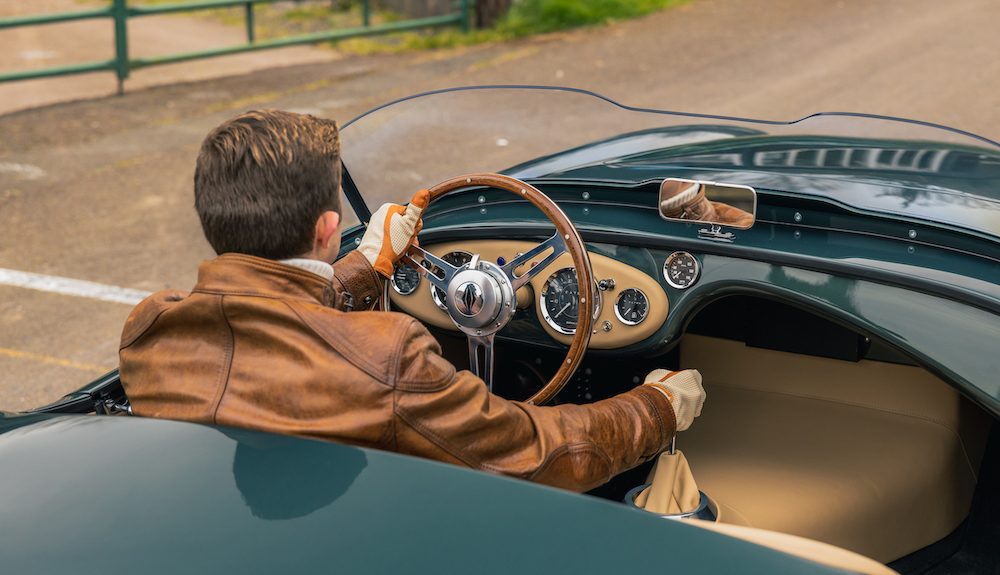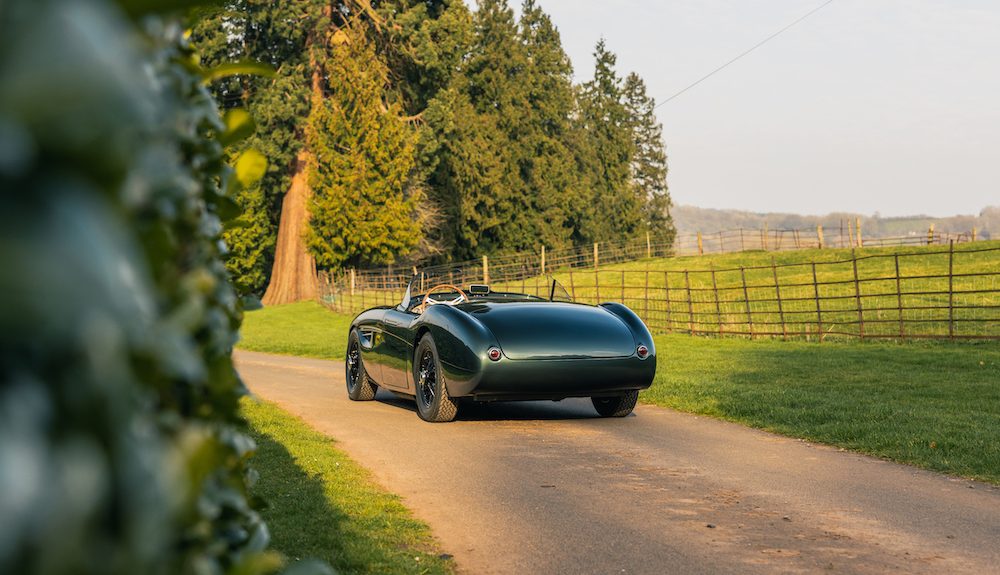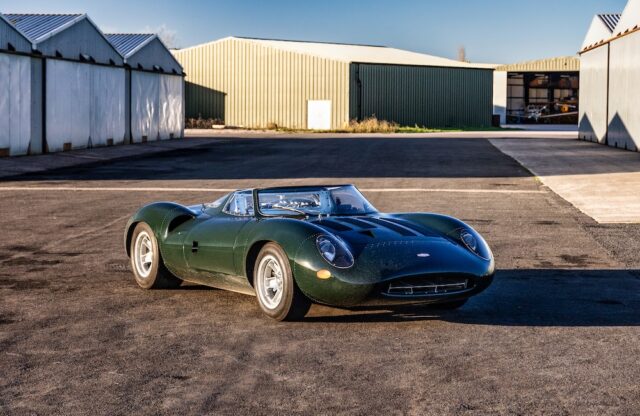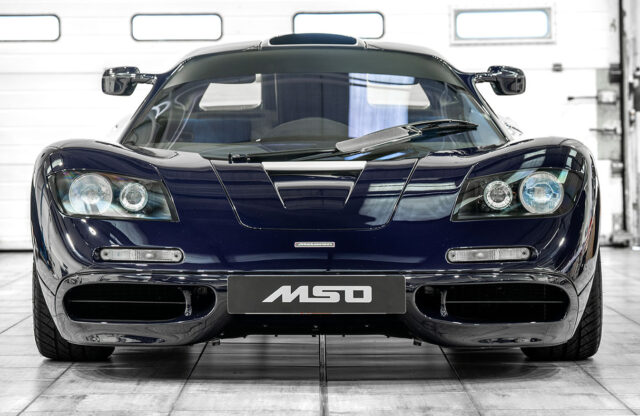Words: David Lillywhite | Photography: CAton
There’s a newcomer to the bespoke classics world, although the companies behind it are anything but new. Healey by Caton is billed as “an ultra-exclusive reincarnation of the iconic Austin-Healey 100 sports car”, and is a project that Magneto has been following for some time.
It’s the creation of a company that anyone who deals with OEM automotive engineering will know of, but that otherwise goes largely under the radar: Envisage Group in Coventry, UK, the traditional heart of the British motor industry.
Envisage Group is one of those companies that major car manufacturers use to develop prototypes in secrecy, away from the main plants. It mixes high-tech computer-modelling services with traditional crafts such as wheeling and trimming, and is behind several of the recent well known Continuation cars.

The Healey is the first time that the company has developed a car for itself, with the Caton name derived from the family that owns the major shareholding in the Envisage Group. The idea was to take the classic Healey 100 and not just make it more usable, as several companies have done over the years, but also to restyle the car as its original designer – Gerry Coker – might have done had the manufacturer been less restrained by construction techniques and budgets of the time.
“The way I looked at it was that if I’d been in the studio, looking at it in clay form before engineers came in, this is what it would look like,” says Darryl Scriven, the ex-McLaren MSO designer who was in charge of styling the Caton. “It was all about keeping it proportional, but simplifying it – so more of a homage to the original without compromises due to what they couldn’t do at the time.”
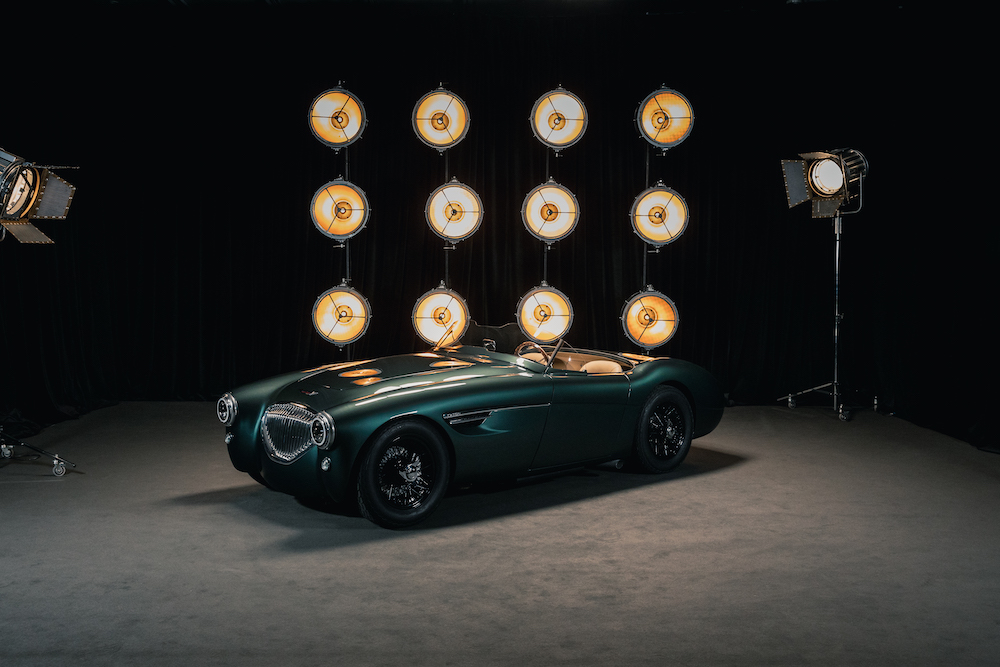
The result is a car that is undoubtedly a Healey, and still on the same basic chassis and running gear of the original, but with a smoother, slightly curvier body and higher-quality interior. It’s built using a fascinating mix of current OEM-level technology and traditional craftsmanship, using the Envisage Group’s bespoke engineering skills with the decades-old hands-on experience of specialist JME Healey, which occupies The Cape Works in nearby Warwick, one of the original Donald Healey Motor Company workshops. Just 25 will be produced.

The Caton is based on the purest of the Healeys, the four-cylinder 100, due to its lighter weight and better balance than the later six-cylinder models. The separate chassis undergoes a complete restoration, building in strengthening at key points and upgrading the suspension to JME-developed specifications – double-wishbone and adjustable coil-spring configuration at the front, with a lever-arm damper system and the original semi-elliptic leaf-spring set-up at the rear, supplemented by custom-fabricated rose-jointed anti-roll bars front and back. Braking is by four-pot alloy calipers with vented front discs at the front, with discs and three-pot alloy calipers fitted at the rear.
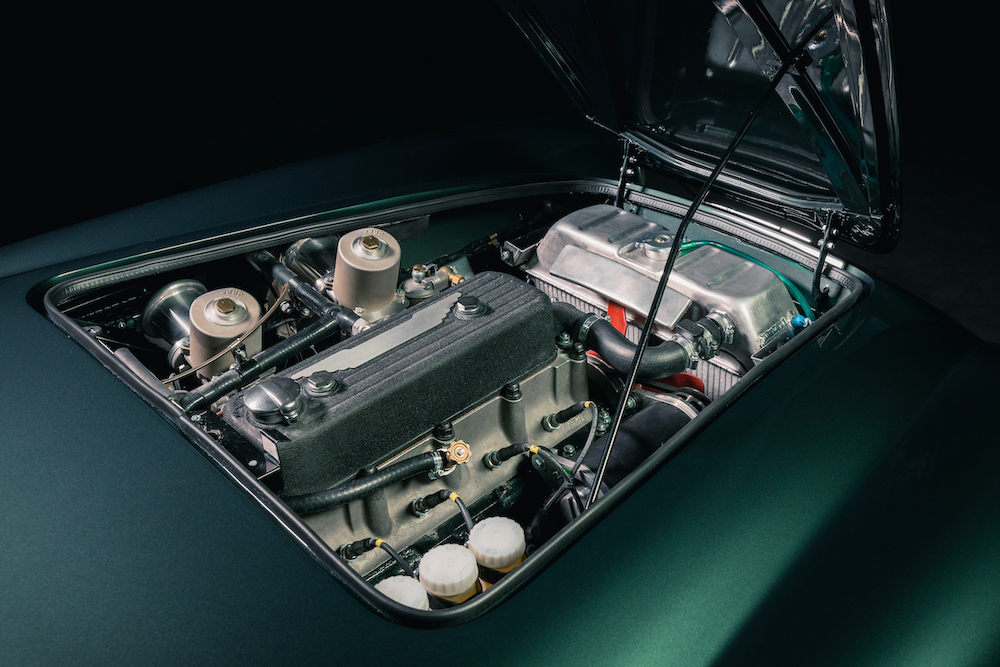
JME Healey is also responsible for the specification and build of the engine, which is completely rebuilt on an original Austin-Healey block, with a steel crankshaft, upgraded bearing shells, high-compression pistons, a new camshaft with more aggressive lobe profiles and roller rockers. With larger twin SU H8 carburettors and inlet manifolds plus a side-exit exhaust (that also neatly bypasses the classic Healey ground-clearance problems), the 2954cc Caton produces 185bhp and 195lb ft of torque.
This is fed through a modern five-speed gearbox, which aside from its obvious advantages over the early Healey 100s’ three-ratio gearbox, or even the four-speeds that followed, is also significantly lighter and less bulky than the originals – and that leads to more space and less heat in the footwells. Anyone who’s driven a Healey for any distance will testify to the importance of that.

This is all part of the quest to make the Caton more comfortable for its occupants. Along with the wider footwells, the rear bulkhead has been modified to allow more movement on the seat positions for much-needed legroom, and the height of the front windscreen has been increased slightly to reduce buffeting.
The dashboard and redesigned door panels – now with deep storage pockets – have been covered with OEM-standard shrink-optimised leather, which gives an excellent fit though without the much-loved aroma. This comes instead from the seats, which are upholstered in premium Bridge of Weir hide.
And then there’s the bodywork… we said at the start that it’s different from the original, and you’ve had time to examine the pictures. So have you spotted the differences?
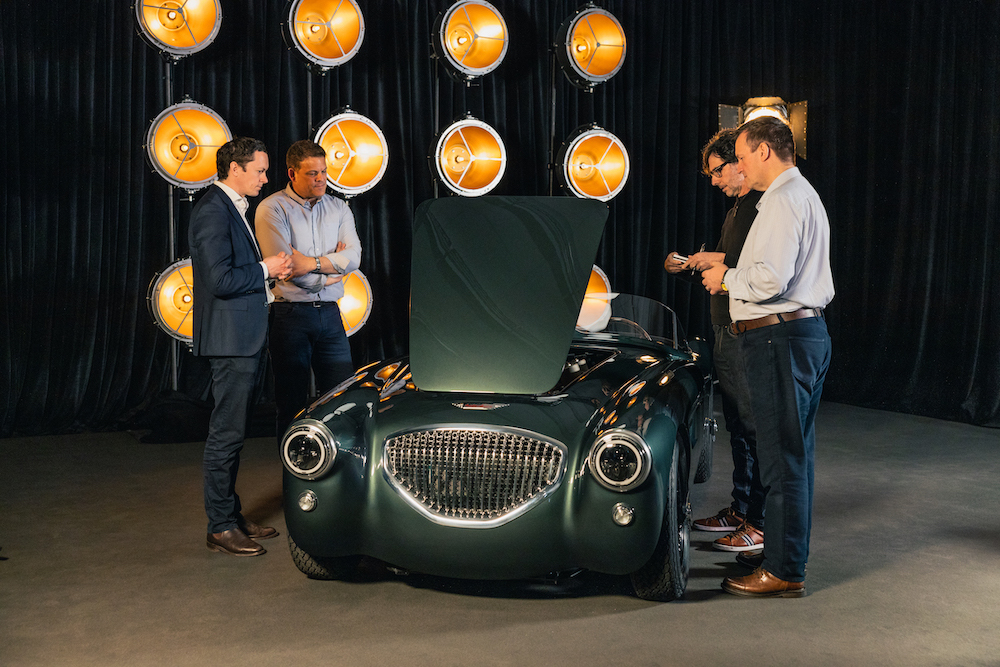
Designer Scriven (second from left, above, with CEO Tim Strafford and Magneto‘s David Lillywhite) explained to us, running his hands over the front wings as he described the changes: “We deseamed everything so this beautiful valley, this beautiful dropping line, is no longer disturbed by a seam.
“Then we removed the bootlid hinges. Are they part of the appeal? Or were they part of the compromises that had to be made? The tailgate handle has been taken away, it all now opens on the keyfob, and the fuel filler is now inside the boot. We’ve also slightly narrowed the rear ‘muscle’ [the bulges over the rear wings}, which gives it more strength and feels more substantial.
“We wanted the front grille to be instantly recognisable. Every vane is at a different angle, for looks and cooling, with varying thicknesses from top to bottom and back to front. It was the biggest challenge of all.”
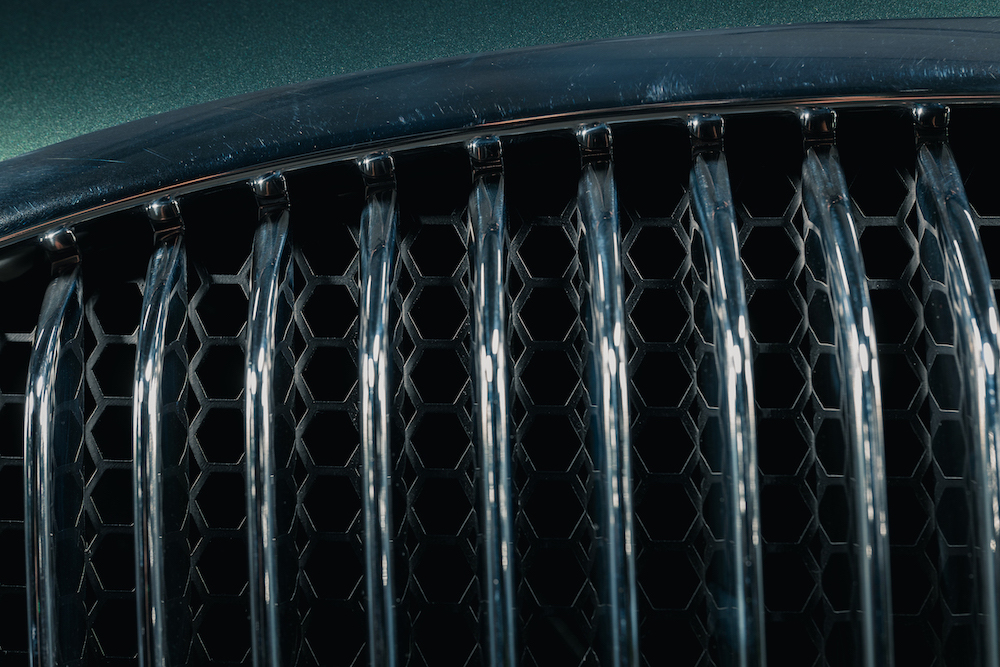
The effect is subtle and clever. If you weren’t familiar with Healeys, you wouldn’t necessarily spot the differences, but the all-new bodywork is sleeker and built to modern OEM tolerances, while the originals had varying panel gaps and dimensions side-to-side. Envisage had already produced some Healey panels for the restoration of an investor’s personal car, but the Caton’s represent a step on from those. Even the bonnet profile was formed especially on the English wheel to suit the revised shape.
Tim Strafford, CEO of Envisage Group, said: “We decided that the first product by Caton had to be creative, stand out in the marketplace and appeal to a global audience, and so it was a natural step that we chose to put our Caton mark on a Healey 100.”
“The Healey by Caton is a car for those who appreciate beautiful objects and exquisite works of art. It is also for those who love the smell of petrol and the sound of a high-performance engine running on carburettors. The Healey by Caton deliberately exposes its occupants to the elements and places them right at the heart of a unique, highly visceral, life-affirming driving experience – none more so than the sound of the side-exit exhaust below the driver’s ear.
“With all mechanical components reconfigured as new, the Healey by Caton frees owners from any reservations they might have over purchasing a classic car. It delivers peace of mind, alluring beauty and breath-taking performance.”
The Caton will be making its first public appearances in the UK at Salon Privé London (April 21-23) and Bicester Scramble (April 24).
